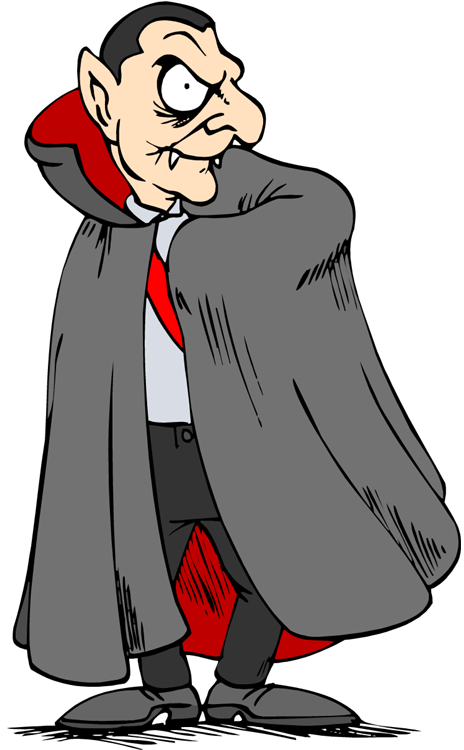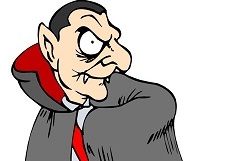This vampire idea has nothing to do with the Twilight fiction books by Stephenie Meyer or the films from those novels. It’s not directly related to the 1897 Gothic horror novel by Irish author Bram Stoker, either. Since the word “Dracula” has come out in a few of the many sighting reports of apparent living pterosaurs, it’s time to examine an explanation for the origin of the vampire legends in Europe and Asia.
Natural Explanation for Vampire Legends
Not all legends are based solely on imagination or fiction. When enough people see something similar at night, fear can cause imaginative ideas to flourish, in particular when people have little or no knowledge about what they actually observed in the dark. It’s common for us to grasp at conjectures to fill in the void of ignorance, yet what originally caused that grasping is often real human experience.
Vampires in Europe
For thousands of years, vampire legends have floated around in what we now call the Middle East and in ancient Greece, and probably elsewhere: terrifying spirits that drank blood. The kinds of stories better known to the modern Western world, however, more resemble legends from southeastern Europe within the past two or three centuries. From the early-to-mid-1700’s in particular—that’s when the frenzy of vampire gossip took hold in some areas.
.

European Dracula
.
Vampire Stories in the Philippines
According to Wikipedia, “The manananggal [related to the Aswang legend] is described as being an older, beautiful woman capable of severing its upper torso in order to fly into the night with huge bat-like wings . . .” This could have come from observations of a ropen, for that modern pterosaur has nothing resembling a lower torso or legs of a human. On Umboi Island, Papua New Guinea, one native tradition about the ropen seems related: It is said to transform itself between snake, human, and ropen. On one or more occasions, natives in the Philippines may have seen a woman at night, in about the same area and about the same time as a ropen was seen. This led to the idea that a woman can transform herself into a large winged creature at night.
Bats and Vampire Legends
Also according to Wikipedia, bats were not originally associated with the vampires of European legends, within the past few centuries. “Vampire bat” refers to species in the Western Hemisphere, with that animal being named for its blood-drinking; the European Dracula more likely got the bat-idea from the New World, not the other way around. Little is said about any wings on vampires, on the Wikipedia pages, and much of what is mentioned refers to stories in the Philippines.
So does the Dracula story (about a man transforming himself into a dangerous bat) come from encounters with blood-sucking pterosaurs in Europe? Probably not, although the man-to-ropen transformation legend on Umboi Island appears to resemble that European story. Each area of the world, and each legend, needs to be taken into account separately, which is a bit outside my area of expertise in my interviews with eyewitnesses of apparent living pterosaurs. Nevertheless, it may be worthy of closer scrutiny.
###
Dracula-Vampire and Modern Pterosaurs
. . . I don’t dispute this possibility for the origin of the Dracula myth in Transylvania, that it involved one or more observations of a large pterosaur standing on the ground at night. But it is speculation.
Searching for Ropens and Finding God
Similarities of belief are emphasized in Searching for Ropens and Finding God, with mutual faith in the supreme mission of Jesus Christ and with mutual conviction in the historic truthfulness of the Flood of Genesis and agreement in the new interpretation of the biological nature of the fiery flying serpents. No compromise is needed in those beliefs.
.



